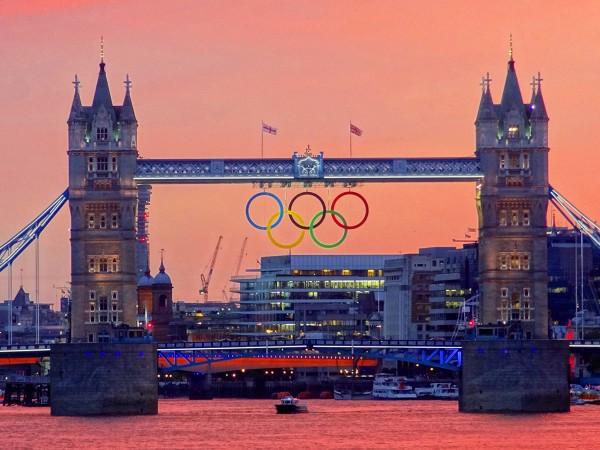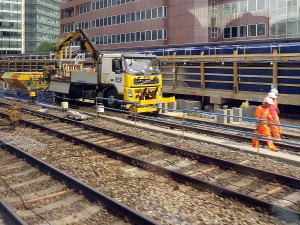 This rather strange question has been central to a storm that has been brewing between various celebrity chefs, including Jamie Oliver and Hugh Fearnley-Whittingstall, and the supermarkets. Supermarkets say that consumers don’t want irregular shaped vegetables, such as carrots, parsnips and potatoes. ‘Nonsense’, say their critics.
This rather strange question has been central to a storm that has been brewing between various celebrity chefs, including Jamie Oliver and Hugh Fearnley-Whittingstall, and the supermarkets. Supermarkets say that consumers don’t want irregular shaped vegetables, such as carrots, parsnips and potatoes. ‘Nonsense’, say their critics.
At the centre of the storm are the farmers, who find a large proportion of their vegetables are rejected by the supermarkets. And these are vegetables which are not damaged or bad – simply not of the required shape. Although these rejected vegetables have been described as ‘wonky’, in fact many are not wonky at all, but simply a little too large or too small, or too short or too long. Most of these vegetables are simply wasted – ploughed back into the ground, or at best used for animal feed.
And it’s not just shape; it’s colour too. Many producers of apples find a large proportion being rejected because they are too red or not red enough.
 But do consumers really want standardised fruit vegetables? Are the supermarkets correct? Are they responding to demand? Or are they attempting to manipulate demand?
But do consumers really want standardised fruit vegetables? Are the supermarkets correct? Are they responding to demand? Or are they attempting to manipulate demand?
Supermarkets claim that they are just responding to what consumers want. Their critics say that they are setting ludicrously rigid cosmetic standards which are of little concern to consumers. As Hugh Fearnley-Whittingstall states:
‘It’s only when you see the process of selection on the farm, how it has been honed and intensified, it just looks mad. There are many factory line systems where you have people looking for faults on the production line; in this system you’re looking for the good ones.
What we’re asking supermarkets to do is to relax their cosmetic standards for the vegetables that all get bagged up and sold together. It’s about slipping a few more of the not-so-perfect ones into the bag.’
In return, consumers must be prepared to let the supermarkets know that they are against these cosmetic standards and are perfectly happy to buy slightly more irregular fruit and vegetables. Indeed, this is beginning to happen through social media.  The pressure group 38 degrees has already taken up the cause.
The pressure group 38 degrees has already taken up the cause.
But perhaps consumers ‘voting with their feet’ is what will change supermarkets’ behaviour. With the rise of small independent greengrocers, many from Eastern Europe, there is now intense competition in the fruit and vegetables market in many towns and cities. Perhaps supermarkets will be forced to sell slightly less cosmetically ‘perfect’ produce at a lower price to meet this competition.
Videos
 Hugh’s War on Waste Episode 1 BBC on YouTube, Hugh Fearnley-Whittingstall (2/11/15)
Hugh’s War on Waste Episode 1 BBC on YouTube, Hugh Fearnley-Whittingstall (2/11/15)
 Hugh’s War on Waste Episode 2 BBC on YouTube, Hugh Fearnley-Whittingstall (9/11/15)
Hugh’s War on Waste Episode 2 BBC on YouTube, Hugh Fearnley-Whittingstall (9/11/15)
Articles
Hugh Fearnley-Whittingstall rejects Morrisons’ ‘pathetic’ wonky veg trial The Guardian, Adam Vaughan (9/11/15)
Jamie Oliver leads drive to buy misshapen fruit and vegetables The Guardian, Rebecca Smithers (1/1/15)
Hugh Fearnley-Whittingstall’s war over wonky parsnips The Telegraph, Patrick Foster (30/10/15)
Asda extends ‘wonky’ fruit and veg range Resource, Edward Perchard (4/11/15)
Wearne’s last farmer shares memories and laments loss of farming community in Langport area Western Gazette, WGD Mumby (8/11/15)
Viewpoint: The rejected vegetables that aren’t even wonky BBC News Magazine (28/10/15)
Viewpoint: The supermarkets’ guilty secret about unsold food BBC News Magazine (6/11/15)
Questions
- What market failures are there is the market for fresh fruit and vegetables?
- Supermarkets are oligopsonists in the wholesale market for fruit and vegetables. What is the implication of this for (a) farmers; (b) consumers?
- Is there anything that (a) consumers and (b) the government can do to stop the waste of fruit and vegetables grown for supermarkets?
- How might supermarkets estimate the demand for fresh fruit and vegetables and its price elasticity?
- What can supermarkets do with unsold food? What incentives are there for supermarkets not to throw it away but to make good use of it?
- Could appropriate marketing persuade people to be less concerned about the appearance of fruit and vegetables? What form might this marketing take?
 Did the benefits of the London Olympics outweigh the costs? The government’s UK Trade and Industry (part of the Department of Business, Innovation & Skills) has just published a report, London 2012, Delivering the economic legacy, which itemises the economic benefits of the games one year on. It claims that benefits to date are some £9.9 billion.
Did the benefits of the London Olympics outweigh the costs? The government’s UK Trade and Industry (part of the Department of Business, Innovation & Skills) has just published a report, London 2012, Delivering the economic legacy, which itemises the economic benefits of the games one year on. It claims that benefits to date are some £9.9 billion.
This compares with costs, estimated to be somewhere between £8.9 billion and £9.3 billion, although this figure does not include certain other costs, such as maintenance of the stadium. Nevertheless, according to the figures, even after just a year, it would seem that the Games had ‘made a profit’ – just.
The £9.9 billion of benefits consist of £5.9 billion of additional sales, £2.5 billion of additional inward investment and £1.5 billion of Olympic-related high value opportunities won overseas.  Most of these can be seen as monetary external benefits: in other words, monetary benefits arising from spin-offs from the Games. The ‘internal’ monetary benefits would be largely the revenues from the ticket sales.
Most of these can be seen as monetary external benefits: in other words, monetary benefits arising from spin-offs from the Games. The ‘internal’ monetary benefits would be largely the revenues from the ticket sales.
In a separate report for the Department of Culture, Media & Sport, Report 5: Post-Games Evaluation, it has been estimated that the total net benefits (net gross value added (GVA)) from 2004 to 2020 will be between £28 billion and £41 billion.
But benefits are not confined just to internal and external monetary benefits: there are also other externalities that are non-monetary. The Culture, Media & Sport report identified a number of these non-monetary externalities. The Summary Report itemises them. They include:
• The health and social benefits of more people participating in sport
• Inspiring a generation of children and young people
• A catalyst for improved elite sporting performance in the UK
• Setting new standards for sustainability
• Improved attitudes to disability and new opportunities for disabled people to participate in society
• Greater social cohesion as communities across the UK engaged with the Games
• Increased enthusiasm for volunteering
• Accelerated physical transformation of East London
• Beneficial socio-economic change in East London
• Important lessons learned for the co-ordination and delivery of other large-scale public and public/private projects
But with any cost–benefit analysis there are important caveats in interpreting the figures. First there may be monetary and non-monetary external costs. For example, will all the effects on social attitudes be positive? Might greater competitiveness in sport generate less tolerance towards non sporty people? Might people expect disabled people to do more than they are able (see)? Second, the costs generally precede the benefits. This then raises the question of what is the appropriate discount rate to reduce future benefits to a present value.
 Perhaps the most serious question is that of the quantification of benefits. It is important that only benefits that can be attributed to the Games are counted and not benefits that would have occurred anyway, even if connected to the Games. For example, it is claimed in the UK Trade & Industry report that much of the Olympic park and stadium for the Winter Olympics in Russia was “designed and built by British businesses”. But was this the direct result of the London Olympics, or would this have happened anyway?
Perhaps the most serious question is that of the quantification of benefits. It is important that only benefits that can be attributed to the Games are counted and not benefits that would have occurred anyway, even if connected to the Games. For example, it is claimed in the UK Trade & Industry report that much of the Olympic park and stadium for the Winter Olympics in Russia was “designed and built by British businesses”. But was this the direct result of the London Olympics, or would this have happened anyway?
Another example is that any inward investment by any company that attended the London Olympics is counted in the £2.5 billion of additional inward investment (part of the £9.9 billion). As the London Evening Standard article below states:
In London, it credited the Games with helping seal the deal for the £1.2 billion investment in the Royal Albert Docks by Chinese developer ABP, the £1 billion investment in Croydon by Australian shopping centre developer Westfield with UK firm Hammerson and the £700 million investment in Battersea Nine Elms by Dalian Wander Group.
It is highly likely that some or all of these would have gone ahead anyway.
Then there are the £5.9 billion of additional sales. These are by companies which engaged with the Olympics. But again, many of these sales could have taken place anyway, or may have displaced other sales.
Many cost–benefit analyses (or simply ‘benefit analyses’) concern projects where there are strong vested interests in demonstrating that a project should or should not go ahead or, in this case, have gone ahead. The more powerful the vested interests, the less likely it is that the analysis can be seen as objective.
Webcasts and Podcasts
 Have Olympics and Paralympics really boosted trade? Channel 4 News, Jackie Long (19/7/13)
Have Olympics and Paralympics really boosted trade? Channel 4 News, Jackie Long (19/7/13)
 Economy boosted by Olympics Sky Sports News, Amy Lewis (19/7/13)
Economy boosted by Olympics Sky Sports News, Amy Lewis (19/7/13)
 Olympic investment boost to last decade – Cable BBC News (19/7/13)
Olympic investment boost to last decade – Cable BBC News (19/7/13)
 Did the UK gain from the Olympics? BBC Today Programme (19/7/13)
Did the UK gain from the Olympics? BBC Today Programme (19/7/13)
Articles
Government announces almost £10bn economic boost from London 2012 Specification Online (19/7/13)
Olympic Legacy Boosted Economy By £10bn, Government Insists The Huffington Post (19/7/13)
Olympics are delivering economic gold but volunteering legacy is at risk The Telegraph, Tim Ross (19/7/13)
Vince Cable: Case for HS2 still being made The Telegraph, Christopher Hope and Tim Ross (19/7/13)
Olympic legacy ‘gave London a £4bn windfall’ London Evening Standard, Nicholas Cecil and Matthew Beard (19/7/13)
London 2012 Olympics ‘have boosted UK economy by £9.9bn’ BBC News (19/7/13)
The great Olympic stimulus BBC News, Stephanie Flanders (19/7/13)
London Olympics still costing the taxpayer one year on Sky Sports (19/7/13)
Mayor missed long-term London Olympic jobs targets, says report BBC News, Tim Donovan (19/7/13)
Olympics legacy: Have the London 2012 Games helped Team GB develop a winning habit? Independent, Robin Scott-Elliot (19/7/13)
London 2012 added up to more than pounds and pence The Guardian, Zoe Williams (19/7/13)
Government Reports
London 2012 – Delivering the economic legacy UK Trade & Investment (19/7/13)
London 2012: Delivering the economic legacy UK Trade & Investment (19/7/13)
Report 5: Post-Games Evaluation: Summary Report Department for Culture, Media & Sport (July 2013)
Report 5: Post-Games Evaluation: Economy Evidence Base Department for Culture, Media & Sport (July 2013)
Questions
- Distinguish between gross and net benefits; monetary and non-monetary externalities; direct costs (or benefits) and external costs (or benefits).
- How should the discount rate be chosen for a cost–benefit analysis?
- Give some examples of monetary and non-monetary external costs of the Games.
- What are the arguments for and against including non-monetary externalities in a cost–benefit analysis?
- Why might the £9.9 billion figure for the monetary benefits of the Games up to the present time be questioned?
 On June 20, the Review of the Government’s case for a High Speed Rail programme was published. This was commissioned by the Transport Select Committee from the independent consultancy, Oxera.
On June 20, the Review of the Government’s case for a High Speed Rail programme was published. This was commissioned by the Transport Select Committee from the independent consultancy, Oxera.
The programme is initially for a high-speed rail link form London to Birmingham and then subsequently for two additonal routes from Birmingham to Manchester and from Birmingham to Leeds. The whole thing is known as the ‘HS2 Y programme’
Oxera’s brief was to ‘provide an independent review of the economic case for the programme and to provide a set of questions that the Committee could use to probe the evidence base put forward by witnesses during its inquiry.’ In considering the economic case, Oxera focused on the economic, social and environment impacts, both monetary and non-monetary.
The summary to the report states that:
Overall, the case for the High Speed Rail programme seems to depend on whether and when the capacity is needed, the selection of the best VfM [value-for-money] approach to delivering that capacity, the degree of uncertainty around the monetised benefits and costs of the preferred options, and judgements on the balance of evidence relating to non-monetised items, such as environment and regeneration impacts (which are likely to be substantive in their own right but not fully set out in the Government’s assessment).
On July 19, the Institute for Economic Affairs, the pro-free-market think-tank, published a highly critical disussion paper, challenging the case for HS2. The paper, High Speed 2: the next government project disaster? arges that:
There is a significant risk that High Speed 2 (HS2) will become the latest in a long series of government big-project disasters with higher-than-forecast costs and lower-than-forecast benefits. HS2 is not commercially viable and will require substantial and increasing levels of subsidy. Taxpayers will therefore bear a very high proportion of the financial risks, which are wholly under-represented in the Economic Case presented by the Department for Transport.
The publication of the report and the IEA discussion paper has fueled the debate between supporters and opponents of HS2, as the articles below demonstrate.
Update
In November 2011, the House of Commons Transport Select Committee came out in favour of the government’s HS2 plans. According to the committee’s chair, Louise Ellman:
A high speed rail network, beginning with a line between London and the West Midlands, would provide a step change in the capacity, quality, reliability and frequency of rail services between our major cities.
A high speed line offers potential economic and strategic benefits which a conventional line does not, including a dramatic improvement in connectivity between our major cities, Heathrow and other airports, and the rest of Europe.
However, she did raise some issues that would need addressing concerning the overall level of investment in the rail network and the encironmental impact of HS2.
Investment in HS2 must not lead to reduced investment in the ‘classic’ rail network. We are concerned that the Government is developing separate strategies for rail and aviation, with HS2 separate from both. We call again for the publication of a comprehensive transport strategy.
Investment in high speed rail has potential to boost growth but may have a substantial negative impact on the countryside, communities and people along the route. This must be better reflected in the business case for HS2 and future phases of the project. We would encourage the Government to follow existing transport corridors wherever possible.
Further update
In January 2012, the government approved HS2. The Transport Secretary, Justine Greening, said:
I have decided Britain should embark upon the most significant transport infrastructure project since the building of the motorways by supporting the development and delivery of a new national high speed rail network.
The ‘articles for further update’ below give reactions to the announcement.
Articles
 Is the UK’s high speed rail project a waste of money? BBC News, Rory Cellan-Jones (21/7/11)
Is the UK’s high speed rail project a waste of money? BBC News, Rory Cellan-Jones (21/7/11)
On a collision path The Economist blogs, Blighty (21/7/11)
High speed rail dismissed as ‘vanity project’ by right-wing think tank The Telegraph, David Millward (19/7/11)
HS2 high-speed rail plans ‘a recipe for disaster’ Guardian, Dan Milmo (19/7/11)
High speed rail report shows ‘uncertainty’ over benefits Rail.co, A. Samuel (21/7/11)
Our high speed rail future BBC News, Rory Cellan-Jones (21/7/11)
Anger as high-speed rail link to London branded ‘vanity project’ Yorkshire Post (20/7/11)
Articles for update
 MPs support plans for a high speed rail network BBC News, Richard Lister (8/11/11)
MPs support plans for a high speed rail network BBC News, Richard Lister (8/11/11)
High-speed rail project will boost economy, say MPs Guardian, Dan Milmo (8/11/11)
High speed rail report ‘raises questions’ say opponents BBC News (8/11/11)
MPs back controversial high-speed rail link Yahoo News, Sebastien Bozon (8/11/11)
 HS2 project: ‘Wrong to castigate locals’ BBC Today Programme (8/11/11)
HS2 project: ‘Wrong to castigate locals’ BBC Today Programme (8/11/11)
Articles for further update
HS2 go-ahead sees mixed reaction BBC News (10/1/12)
 HS2 – What’s in it for you? Channel 4 News (10/1/12)
HS2 – What’s in it for you? Channel 4 News (10/1/12)
Ready to depart: But will the HS2 express be derailed before it arrives? Independent, Nigel Morris (11/1/12)
HS2 go-ahead sees mixed reaction BBC News (10/1/12)
HS2 go-ahead sees mixed reaction BBC News (10/1/12)
Reports and discussion paper
Review of the Government’s case for a High Speed Rail programme Oxera Publishing (20/6/11)
High Speed 2: the next government project disaster? IEA Discussion Paper No. 36 (19/7/11)
Good case for high speed rail to run to Birmingham and beyond, say MPs House of Commons Transport Select Committee News (8/11/11)
Transport Committee – Tenth Report: High Speed Rail House of Commons Transport Select Committee (8/11/11)
Questions
- Itemise (a) the monetary costs and benefits and (b) the non-monetary costs and benefits of HS2 that were identified by Oxera. Try to identify other costs and benefits that were not included by Oxera.
- Why are the costs and benefits subject to great uncertainty?
- How should this uncertainty be taken into account by decision-makers?
- Explain the process of discounting in cost–benefit analysis. How should the rate of discount be chosen?
- What are the main criticisms of the report made by the IEA discussion paper?
- Assess these criticisms.
 This rather strange question has been central to a storm that has been brewing between various celebrity chefs, including Jamie Oliver and Hugh Fearnley-Whittingstall, and the supermarkets. Supermarkets say that consumers don’t want irregular shaped vegetables, such as carrots, parsnips and potatoes. ‘Nonsense’, say their critics.
This rather strange question has been central to a storm that has been brewing between various celebrity chefs, including Jamie Oliver and Hugh Fearnley-Whittingstall, and the supermarkets. Supermarkets say that consumers don’t want irregular shaped vegetables, such as carrots, parsnips and potatoes. ‘Nonsense’, say their critics. But do consumers really want standardised fruit vegetables? Are the supermarkets correct? Are they responding to demand? Or are they attempting to manipulate demand?
But do consumers really want standardised fruit vegetables? Are the supermarkets correct? Are they responding to demand? Or are they attempting to manipulate demand? The pressure group 38 degrees has already taken up the cause.
The pressure group 38 degrees has already taken up the cause. Hugh’s War on Waste Episode 1 BBC on YouTube, Hugh Fearnley-Whittingstall (2/11/15)
Hugh’s War on Waste Episode 1 BBC on YouTube, Hugh Fearnley-Whittingstall (2/11/15) Hugh’s War on Waste Episode 2 BBC on YouTube, Hugh Fearnley-Whittingstall (9/11/15)
Hugh’s War on Waste Episode 2 BBC on YouTube, Hugh Fearnley-Whittingstall (9/11/15)


